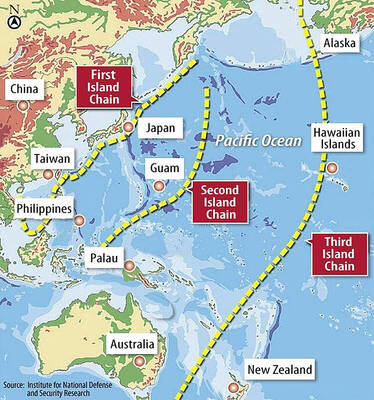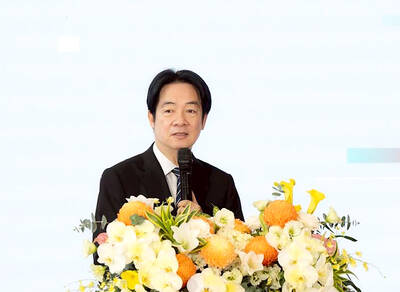Taiwan’s “innovative” integration of electronic health records with immigration data enabled its targeted response to the COVID-19 pandemic, the International Hospital Federation (IHF) said in a report released this month.
An IHF Beyond COVID-19 Task Force report, published on Thursday last week, offered insights into how hospitals can embrace new ways of delivering healthcare while responding to the evolving pandemic, and Taiwan’s response was highlighted to show the importance of sharing information and access.
The National Health Insurance Administration’s (NHIA) strategy to share information through MediCloud — which provides healthcare providers and patients with real-time access to health records — to control the pandemic was a key factor in the nation’s success in capping COVID-19 outbreaks and deaths, the report said.
“Although the system was not initially designed to stop a pandemic, it was nimble enough to be reoriented toward one,” the report said.
To help the system identify potential cases, the NHIA created COVID-19 risk indicators in the MediCloud system related to travel footprints, occupation, contacts and clusters, it said.
By linking MediCloud with border entry and exit data uploaded from the National Immigration Agency, the administration created a centralized, real-time alert system for potential COVID-19 cases, the report said.
“These automatic system alerts allow healthcare providers to obtain patients’ travel history, high-risk occupation, contact history and clustering at mass gatherings in real-time, enabling a more efficient triage and accurate diagnosis of COVID-19,” the report said. “This enhancement to the MediCloud system has been vital to Taiwan’s precision testing strategy, which is efficient in testing a small, but critical number of people, instead of mass testing.”
NHIA Director-General Lee Po-chang (李伯璋) said that he welcomed the recognition of Taiwan’s strategy as an honor for all healthcare workers in the nation.
The Geneva, Switzerland-based IHF established the task force to help hospitals adopt effective practices and strategies developed during the pandemic, the report said.
The pandemic has accelerated healthcare innovation at an unprecedented pace, toward more effective and agile models of care — a transformation needed in many systems worldwide, the IHF said.

LIMITS: While China increases military pressure on Taiwan and expands its use of cognitive warfare, it is unwilling to target tech supply chains, the report said US and Taiwan military officials have warned that the Chinese People’s Liberation Army (PLA) could implement a blockade within “a matter of hours” and need only “minimal conversion time” prior to an attack on Taiwan, a report released on Tuesday by the US Senate’s China Economic and Security Review Commission said. “While there is no indication that China is planning an imminent attack, the United States and its allies and partners can no longer assume that a Taiwan contingency is a distant possibility for which they would have ample time to prepare,” it said. The commission made the comments in its annual

DETERMINATION: Beijing’s actions toward Tokyo have drawn international attention, but would likely bolster regional coordination and defense networks, the report said Japanese Prime Minister Sanae Takaichi’s administration is likely to prioritize security reforms and deterrence in the face of recent “hybrid” threats from China, the National Security Bureau (NSB) said. The bureau made the assessment in a written report to the Legislative Yuan ahead of an oral report and questions-and-answers session at the legislature’s Foreign Affairs and National Defense Committee tomorrow. The key points of Japan’s security reforms would be to reinforce security cooperation with the US, including enhancing defense deployment in the first island chain, pushing forward the integrated command and operations of the Japan Self-Defense Forces and US Forces Japan, as

‘TROUBLEMAKER’: Most countries believe that it is China — rather than Taiwan — that is undermining regional peace and stability with its coercive tactics, the president said China should restrain itself and refrain from being a troublemaker that sabotages peace and stability in the Indo-Pacific region, President William Lai (賴清德) said yesterday. Lai made the remarks after China Coast Guard vessels sailed into disputed waters off the Senkaku Islands — known as the Diaoyutai Islands (釣魚台) in Taiwan — following a remark Japanese Prime Minister Sanae Takaichi made regarding Taiwan. Takaichi during a parliamentary session on Nov. 7 said that a “Taiwan contingency” involving a Chinese naval blockade could qualify as a “survival-threatening situation” for Japan, and trigger Tokyo’s deployment of its military for defense. Asked about the escalating tensions

The Ministry of Economic Affairs said it plans to revise the export control list for strategic high-tech products by adding 18 items under three categories — advanced 3D printing equipment, advanced semiconductor equipment and quantum computers — which would require local manufacturers to obtain licenses for their export. The ministry’s announcement yesterday came as the International Trade Administration issued a 60-day preview period for planned revisions to the Export Control List for Dual Use Items and Technology (軍商兩用貨品及技術出口管制清單) and the Common Military List (一般軍用貨品清單), which fall under regulations governing export destinations for strategic high-tech commodities and specific strategic high-tech commodities. The